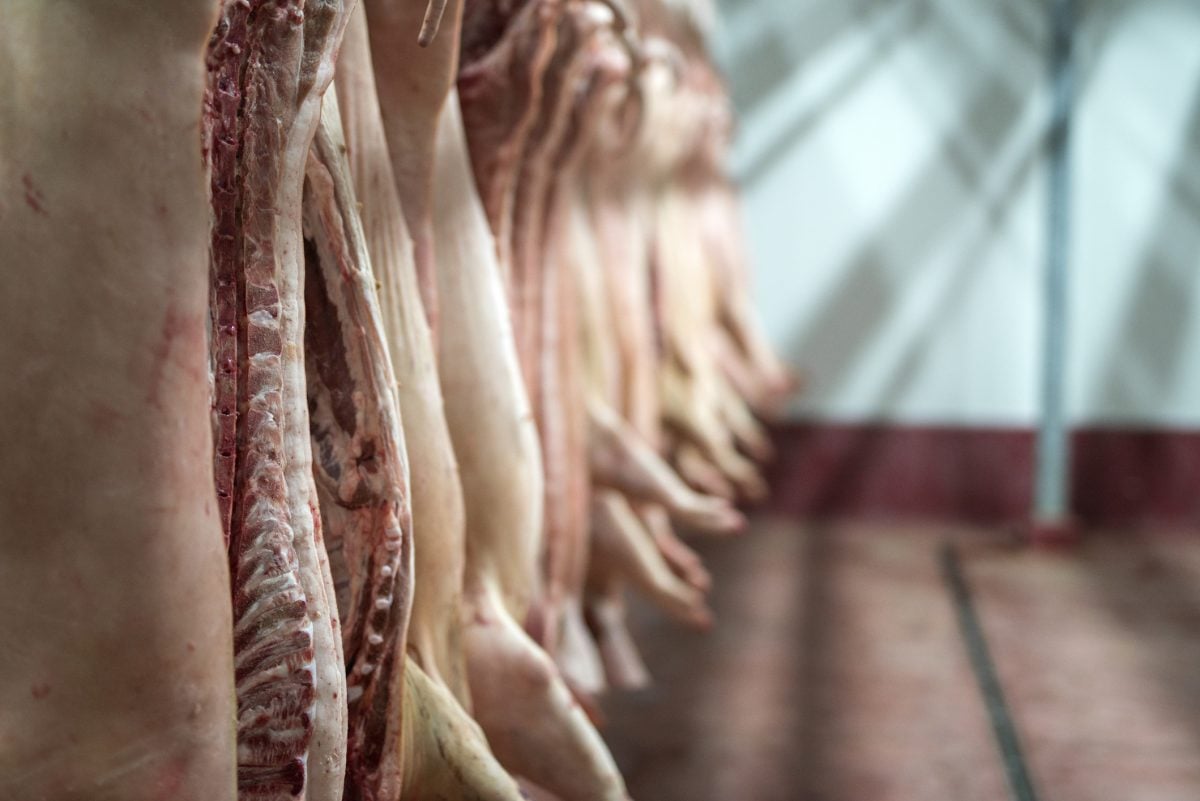Gavin Maguire is a Reuters columnist, opinions expressed are his own
CHICAGO, April 23 (Reuters) – Traditionally, the July-November soybean spread has been viewed as the quintessential old crop/new crop position to hold over the U.S. growing season as the vagaries of Midwest growing weather coupled with gyrations in global demand make for volatile prices.
But for many traders the 2014 ‘July-Nov’ is already beginning to look like an overly risky proposition after having recently accelerated to record highs for this time of year just as a flow of imports look set to buffet nearby prices by replenishing end-user stockpiles.
Read Also

U.S. livestock: Cattle slip back, hogs gain
Chicago cattle futures slipped back on Friday after Thursday’s pause. Hog futures crept upward. Most-active December live cattle futures closed…
Nonetheless, traders still want exposure to this market as it transitions from historical tightness to relative abundance over the coming months, and so are opting for a less volatile spread that still straddles the 2013/14 and 2014/15 crop years but tends to display fewer extreme price moves than the July-Nov: the August-September spread.
TOO HOT TO HANDLE
While the July-November remains by far the most popular and liquid spread in 2014 soybean futures contracts, it is also the most volatile, and has started to give some traders who are holding it plenty of anxiety as crop prices gyrate lately in response to reports of Brazilian imports and Chinese soy crusher purchase cancellations.
Even so, the July-Nov recently widened out to its highest level ever for this time of year on the back of brisk processor demand for nearby supplies and widespread expectations of a rise in 2014 U.S. soy plantings that should set the stage for record-sized crop come harvest.
All told, the July-Nov spread remains below its all-time high of just over $3.30 a bushel scored last July, but is already close to $1 a bushel above where the 2013 spread was trading at this point a year ago.
Indeed, only the 2004 July-Nov spread traded as high as this year’s, forcing traders and analysts to draw comparisons with that year’s market developments which started out strongly thanks to brisk global demand but faltered mid-year on the back of Chinese purchase cancellations.
This year’s recent rash of Chinese cancellations also draw comparisons to the 2004 defaults, and have raised red flags for several traders who had been onboard the July – Nov for most of the year so far.
Clearly, many traders remain in the spread, but tensions are rising over whether it will repeat the mid-May collapse seen in 2004 that saw it contract from more than $2.60 a bushel to less than $1.20 by early June as news of the Chinese cancellations sparked a wave of panic selling among commercials in South America and elsewhere.
The 2014 cancellations have so far been offset by the continued strong demand by U.S. processors. But questions are starting to emerge about if that demand pace will remain as brisk going forward in the face of a quickening stream of soybean and soy product imports from other countries.
At face value, the imported tonnages involved so far appear to be far too small to make any meaningful impact on end-user inventories.
But a recent slow-down in the climb in cash basis levels at a number of key commercial markets is giving some traders sitting on long July exposure the jitters, especially amid the swirls of cancellation rumors and import chatter.
Even amid the recent price turbulence, however, there remains an enduring appetite to sustain long-sided exposure to old crop soybeans while domestic stocks remain tight, and to ratchet up short-sided bets on new crop prices as 2014 planting gets underway.
THE JULY-NOV ‘MINI ME’
An effective alternative to the whippy and high-priced July-Nov spread is the Aug-Sep spread, where the August contract is tied to the very last remnants of the 2013 crop and the Sep contract represents the first batch of the 2014 harvest.
Due to its very narrow time span that is focused largely at the tail end of the growing season and into the first harvest runs, the spread misses out on much of the growing-season gyrations that may be more fully captured by the July-Nov.
Nevertheless, history has shown that previous Aug-Sep spreads have closely mimicked the July-Nov during major price moves, albeit with fewer price fireworks.
In addition, this year the Aug-Sep has the added perceived benefit of being less ‘fully priced’ at the current time than the July-Nov, and so should be less susceptible to any sudden contractions should nearby market prices lose ground.
Further, given the relatively high price of soybeans compared to corn this spring, a notable amount of early-season soybeans are expected to have been planted this year that should see a swell in fresh supplies come available in late summer that will be deliverable against the September contracts.
Clearly a majority of the new harvest supplies will remain tied to November futures, which will remain the benchmark contract for determining deferred price values.
But for those traders looking for an alternative destination for short-sided bets that may have lower overall volatility than the Nov contract, Sep futures appear to be a popular choice.
And married to a long stance in August futures represents a potentially less crowded old crop/new crop spread for the 2014 growing season.














